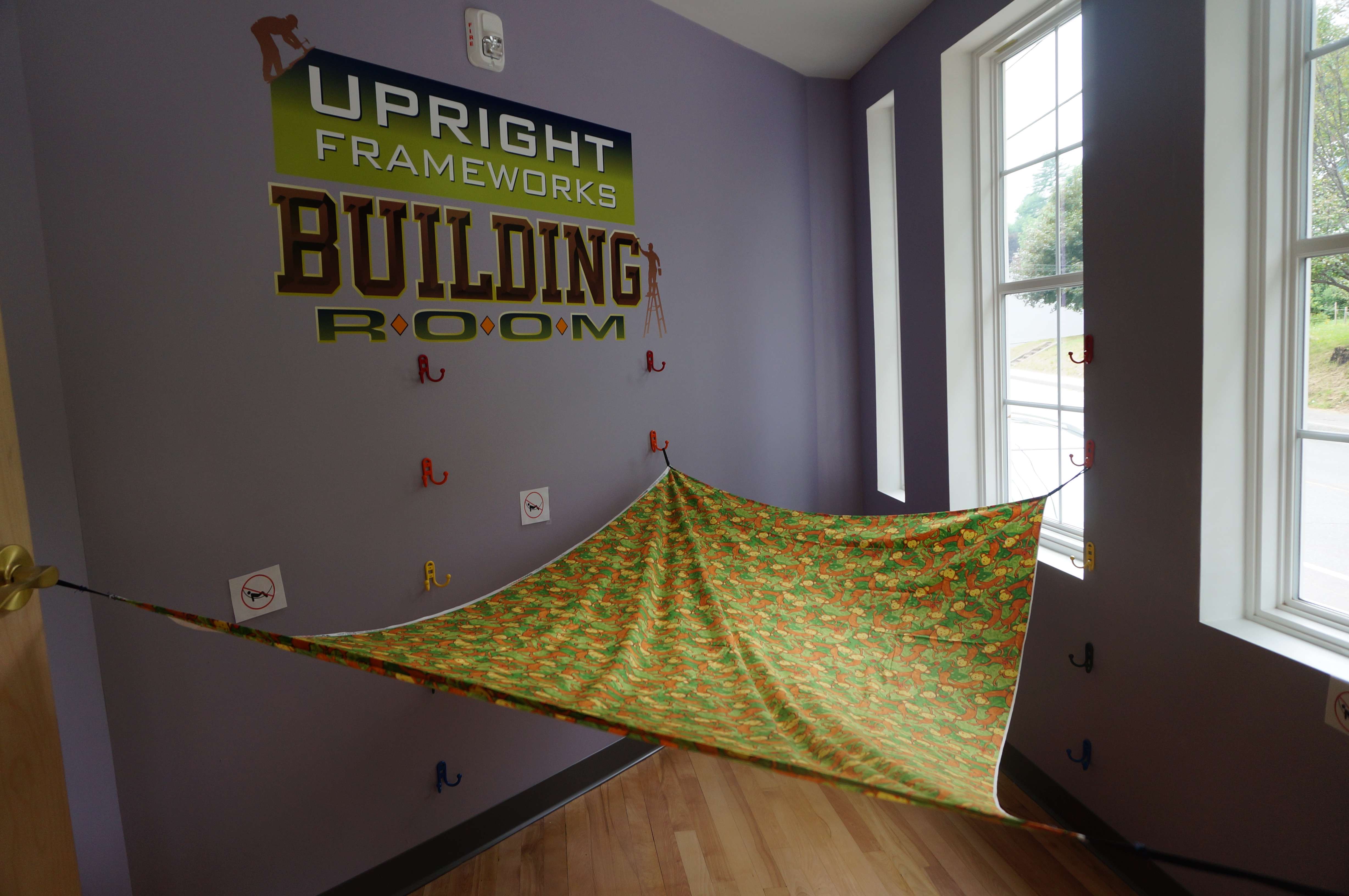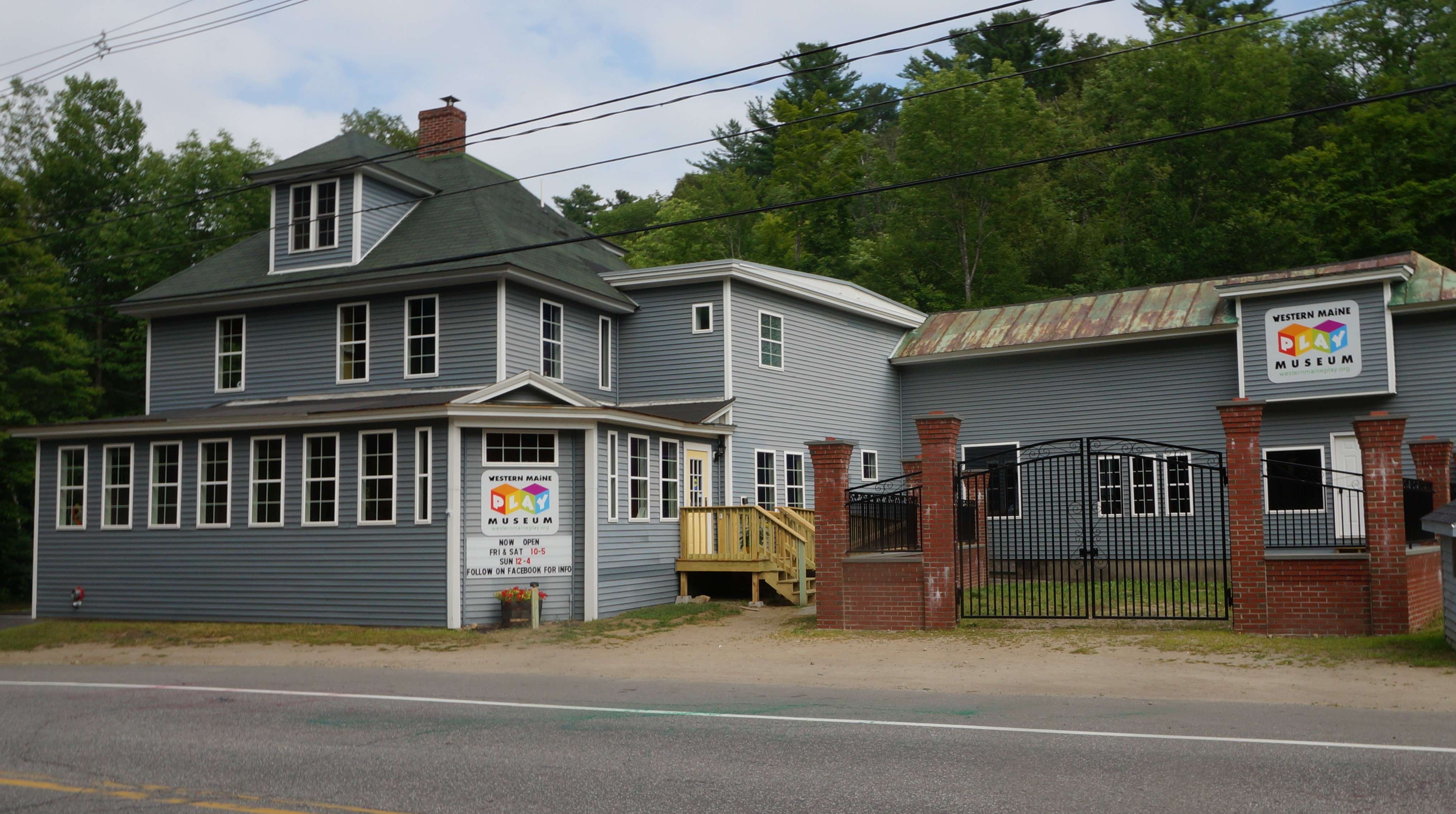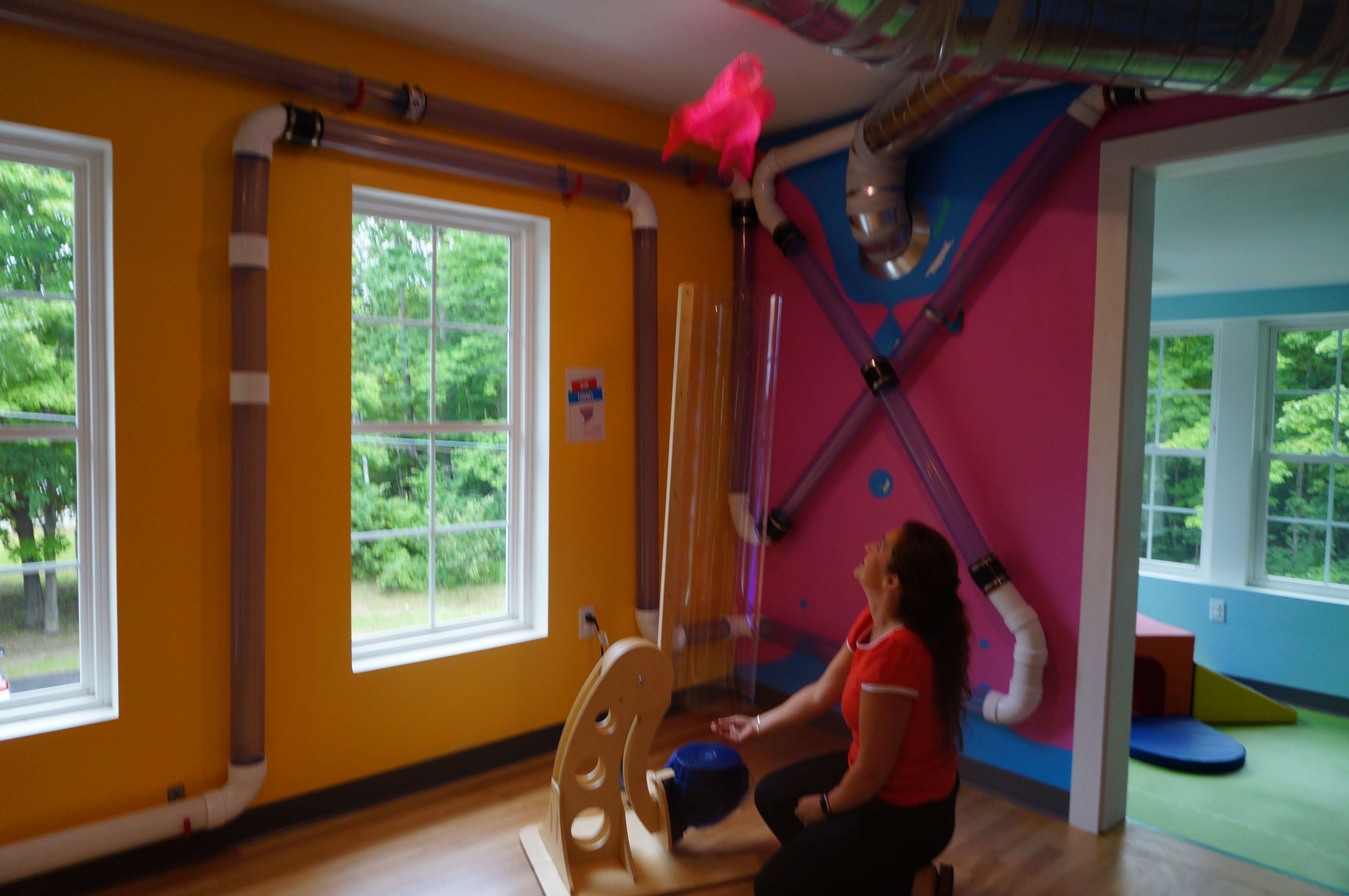
Wilton Play Museum opens after six years of work
When Angela McLeod got involved creating the Western Maine Play Museum in Wilton six years ago, she didn’t think it would be easy. Just easier than it turned out to be.
“We originally thought there’d be one big major donor, but that didn’t happen,” McLeod, a member of the museum’s board of directors and president until this year, said Tuesday.
What happened instead was a lot of smaller donors, area volunteers who helped create and build exhibits, businesses donating goods and services, and, in the end, a new play museum for children that’s expected to also add to Wilton’s ongoing revitalization.
The Western Maine Play Museum had a soft opening last weekend, and will have a grand opening Sept. 21. It’s been a long haul for a process that began in 2013 when the nonprofit organization formed with the goal to create a play museum in Franklin County.
The museum got a home in 2014, when the family of Albert York, the town’s first town doctor, donating their century-old house at 561 Main St.
The house needed major renovations, a bill estimated to be around $500,00, but at the time museum organizers predicted a 2015 opening.
Five years and nearly $1 million later, the house is fully renovated and the museum is welcoming visitors. Still left to do is renovation of the 1,500-square-foot former carriage house into a play village, but McLeod said that should be easier now that the museum is open.
Town Manager Rhonda Irish has long touted the museum as a key to downtown revitalization.
After touring it last week, she told Mainebiz, "I have to say it is top notch. The rooms are beautiful, the educational toys are high quality and well thought out.”

A community effort
The museum is in the two-story wood frame house, about 3,000 square feet. A small addition was added to the back for an elevator and more accessible staircase, though the polished wood stairs that are original to the house still remain. The wood is slowly being restored, but one change is that the treads now play musical notes when they’re stepped on.
That’s the theme of the museum: Everything is interactive, with nature, magnet and train rooms. There is also a large invention room and a small toddler room.
The museum benefited from a series of grants over the years, including a $150,000 matching grant from the Sandy River Charitable Foundation and an August 2017 grant for $157,000 from the Northern Border Regional Commission that, while appreciated, required additional work that added a year to the renovation schedule, McLeod said.
Donations came in through an online wish list that allowed donors to see what exhibit items were needed and they were supporting.

Most of the rooms are sponsored by local businesses, including the building room, which is sponsored by Upright Frameworks, a Wilton construction company that did the renovation work, much of it at cost.
The museum also took advantage of local student programs. Foster Technical Career Center in Farmington helped building displays, and students from Maine Masonry School in Avon built the brick wall around the courtyard in front of the barn.
Robbins Welding not only did the ironwork for the outside brick wall, but also helped with a magnet room exhibit.
Businesses from across the county have donated services and items for exhibits, and local volunteers and artists have helped as well. University of Maine at Farmington professor and artist Jesse Potts created several exhibits. Craig Lewis, a retired doctor and husband of Lori Lewis, the museum president, created an extensive series of pneumatic tubes that snake around the second-floor invention room, shooting ping-pong balls out in random spots.
A beanstalk mural the length of the elevator shaft was painted by artist Katie Kiger, a friend of Executive Director Joni James.
“She asked if there was anything she could do to help, and I said, ‘Yes, I would love a bean stalk up the elevator shaft,” James said.
That willingness to chip in is the hallmark of the museum’s creation, James and McLeod said. "This was a total community effort, with a lot of community support, and business support," McLeod said.

Learning what not to do
McLeod also did some work of her own. She visited other play museums to see what they were doing right, but also visited ones that hadn’t gotten off the ground, or had closed, to see what didn’t work.
One big takeaway was that the museum couldn’t be run by volunteers; it had to have dedicated staff. James was hired as executive director in June.
She’s passionate about the museum’s mission to engage children, and so far those visiting the museum — both kids and their parents — are thrilled with what they find, she said.
Both she and McLeod cite statistics from the Maine Early Learning Investment Group, a group of business leaders, who formed the organization around the philosophy that “the success of Maine’s economy depends on educated, skilled and innovative workers,” and raises and invests money in healthy development of Maine children and families.
While one goal of the museum is to attract visitors to Franklin County, the bigger goal is for the children it services, both visitors and locals.
The learning investment group says that 15 of the 37 babies born each day in Mine will arrive at kindergarten without the developmental skills to succeed, with more than 70% unable to read at a proficient level when they enter fourth grade, and half of that 15 dropping out of high school.
The museum, which engages children and builds skills, is a key to countering that, James said.
“I can’t stress enough how much this is needed,” she said.
The museum is teaming up with the University of Maine Early Childhood Education program on programming, and also for the college’s students to get hands-on experience.
Both McLeod and James, area natives, are also excited about the role the museum will play in Wilton.
“It’s all about revitalization,” McLeod said as she stood in the brightly painted entryway of the museum. “This was an old building that was going to deteriorate over time, now it’s a key piece of the puzzle.”










0 Comments